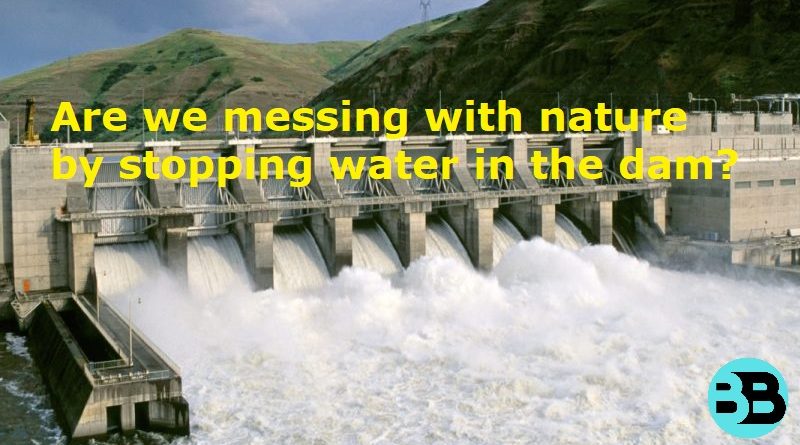Interfering with Nature: The Implications of Stopping Water in Dams
Dams have been constructed for centuries to harness the power of water for various purposes such as irrigation, hydroelectric power generation, and flood control. While dams offer undeniable benefits to human societies, there are concerns about the potential consequences of interrupting natural water flow and stopping it in reservoirs. This essay delves into the ways in which the act of stopping water in dams can interfere with the natural environment, examining both short-term and long-term implications.
Altered Hydrological Regimes
One of the primary impacts of stopping water in dams is the alteration of hydrological regimes. Natural water flow patterns, including seasonal variations, are disrupted when water is impounded in reservoirs. Downstream river ecosystems, which have evolved to rely on specific flow patterns, are directly affected. Reduced water flow can lead to habitat loss, decreased biodiversity, and changes in vegetation patterns. Additionally, the regulation of water release from dams can disrupt the downstream flow, resulting in unnatural flooding or prolonged periods of low flow, both of which can have detrimental effects on flora and fauna.
Loss of Sediment
Dams have the unintended consequence of trapping sediment upstream, leading to a reduction in downstream sediment transport. Sediment deposition in reservoirs alters natural sediment flow and affects downstream ecosystems and landforms. River deltas and coastal areas, which rely on a constant influx of sediment for their stability and maintenance, suffer from erosion and land loss. This loss of sediment can also disrupt the functioning of aquatic ecosystems by reducing nutrient availability and affecting the spawning grounds of certain species.
Impaired Fish Migration
Many fish species rely on migratory patterns to complete their life cycles, including spawning and feeding. Stopping water in dams creates physical barriers that impede fish migration. Fish that need to travel upstream to spawn, such as salmon, face difficulties in reaching their traditional breeding grounds. This disruption of natural migration patterns can lead to a decline in fish populations, affecting both commercial and recreational fishing industries and the overall balance of aquatic ecosystems.
Altered Water Quality
When water is impounded in reservoirs, it undergoes changes in temperature, dissolved oxygen levels, and nutrient concentrations. These alterations in water quality can have adverse effects on the ecosystem. Reduced oxygen levels in the deeper layers of reservoirs can lead to the accumulation of organic matter and the release of harmful gases, such as methane. The changed thermal conditions can impact aquatic organisms’ physiology and behavior, while the altered nutrient levels can promote the growth of harmful algal blooms, depleting oxygen and causing toxic conditions for aquatic life.
Disruption of Riparian Zones
Riparian zones, the areas adjacent to rivers and streams, are important habitats that support a diverse array of plant and animal species. Stopping water in dams can alter the natural flooding patterns of rivers, leading to the loss of riparian vegetation and changes in the composition of these ecosystems. Many species that rely on riparian zones for nesting, feeding, and shelter are adversely affected by the loss of habitat, ultimately impacting biodiversity and ecological functioning.
Geological Implications
The act of stopping water in dams can have geological implications as well. The weight of the impounded water can exert significant pressure on the surrounding geological structures. Over time, this pressure can lead to increased seismic activity and the potential for landslides. The altered hydrological regime caused by dams can also result in the erosion of riverbanks and the destabilization of slopes. These geological hazards pose risks to human settlements, infrastructure, and the overall stability of ecosystems in the vicinity of dams. Landslides can not only cause damage to human structures but also result in the burial of riverbeds and habitats, further disrupting natural processes and causing ecological imbalances.
Impacts on Downstream Water Supply
Stopping water in dams can have downstream implications, particularly regarding water supply for communities and ecosystems. While dams provide a regulated water supply, the altered flow patterns can affect downstream regions that depend on the natural variability of water availability. Moreover, the retention of water in reservoirs can lead to the loss of water downstream, impacting irrigation for agriculture, drinking water supply, and the overall health of aquatic ecosystems. This can exacerbate water scarcity issues in regions where water resources are already limited.
Altered Riparian and Wetland Ecosystems
Riparian and wetland ecosystems play crucial roles in filtering water, providing habitat for numerous species, and maintaining the balance of nutrient cycles. Stopping water in dams disrupts the natural hydrological connectivity between rivers and these ecosystems. Wetlands and riparian zones that rely on regular flooding and water replenishment may dry out or experience prolonged water stagnation, leading to the loss of specialized plant and animal species. This loss of biodiversity can have cascading effects on the functioning of ecosystems and the services they provide.
Loss of Cultural and Archaeological Heritage
The construction of dams and the subsequent impoundment of water often results in the submergence of culturally significant sites and archaeological treasures. Historical settlements, sacred sites, and artifacts can be lost forever when water is stopped in dams. This loss not only erases valuable cultural heritage but also affects local communities’ sense of identity and connection to the land, leading to cultural and social disruptions.
Long-Term Implications and Dam Lifespan
Stopping water in dams raises concerns about the long-term sustainability and lifespan of these structures. Over time, sediment accumulation reduces the storage capacity of reservoirs, impacting their ability to provide water, regulate flow, and generate hydropower. Dams require regular maintenance, including costly dredging operations to remove sediment, to maintain their functionality. As dams age, the potential for structural degradation and failure increases, posing risks to human lives, downstream ecosystems, and infrastructure.
Stopping water in dams undoubtedly alters natural water flow patterns and has far-reaching consequences for the environment. The impacts include disrupted hydrological regimes, loss of sediment, impaired fish migration, altered water quality, changes to riparian zones, geological hazards, downstream water supply issues, degraded riparian and wetland ecosystems, loss of cultural heritage, and concerns about dam lifespan. These consequences highlight the need for a careful and comprehensive assessment of the environmental impacts before the construction of dams and the implementation of measures to mitigate and manage these effects.
Balancing the benefits of dam projects with their potential environmental repercussions is crucial. Incorporating environmentally friendly design, implementing effective fish passage systems, prioritizing sediment management strategies, and considering alternative renewable energy sources can help minimize the negative impacts of stopping water in dams. Furthermore, engaging with local communities, indigenous peoples, and stakeholders in decision-making processes can help ensure that the potential environmental consequences are adequately addressed and that sustainable solutions are pursued.
In summary, while dams offer significant benefits, it is important to acknowledge and mitigate the environmental costs associated with stopping water in reservoirs. Striking a balance between human needs and ecological integrity is essential to ensure the long-term sustainability of water resource management and the preservation of our natural environment.




